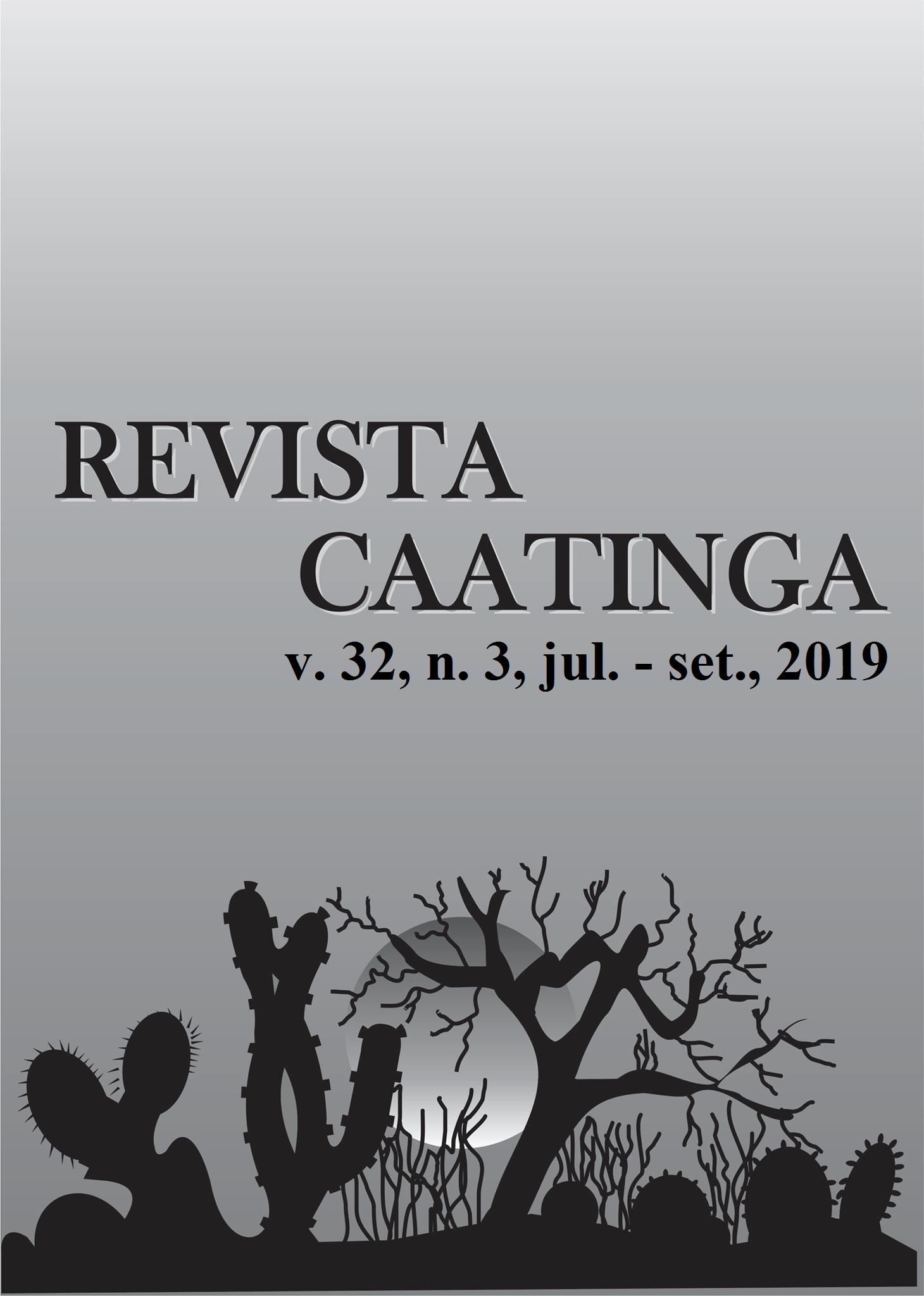THERMOTHERAPY AS A MICROBIAL CONTAMINANT-REDUCING AGENT IN MICROPROPAGATION OF BAMBOO
DOI:
https://doi.org/10.1590/1983-21252019v32n313rcKeywords:
Thermal treatment. Microorganisms. Bambusa vulgaris.Abstract
The aim of the research was to evaluate the effectiveness of thermotherapy by humid heat of nodal segments to reduce the incidence of microbial contaminants in the introduction phase of the in vitro propagation of Bambusa vulgaris. Two independent experiments were carried out in a completely randomized design using a 4 × 2 factorial arrangement, four levels of temperature (25, 30, 40 and 50 °C) versus two treatment time intervals (5 or 10 min). Each treatment was composed of nine replications, corresponding to one single-nodal segment obtained from primary or secondary branches, in sucrose-free Murashige and Skoog medium with half the concentration of salts, supplemented with 6.5 g L-1 agar, 50 mg L-1 citric acid, 50 mg L-1 ascorbic acid, 200 mg L-1 chloramphenicol and 2 mg L-1 N6-benzylaminopurine. Isolation of prevalent mold fungi per repetition was conducted, and identification at genus level obtained from microcultures. The treatments corresponding to 50 °C for 5 or 10 min reduced significantly the fungal contamination that occurred at 11% and 0%, respectively, in nodal segments from primary branches, and 0% and 11%, respectively, in those from secondary ones. Fungi of genera Alternaria, Bipolaris and Curvularia were isolated from both types of segment, and Cladosporium from secondary branches only. The lowest percentages of mycelial growth detected in nodal segments submitted to both binomials demonstrated the effectiveness of the technique to reduce fungal contamination despite negative interference on sprouting.
Downloads
Downloads
Published
Issue
Section
License
Os Autores que publicam na Revista Caatinga concordam com os seguintes termos:
a) Os Autores mantêm os direitos autorais e concedem à revista o direito de primeira publicação, com o trabalho simultaneamente licenciado sob a Licença Creative Commons do tipo atribuição CC-BY, para todo o conteúdo do periódico, exceto onde estiver identificado, que permite o compartilhamento do trabalho com reconhecimento da autoria e publicação inicial nesta revista, sem fins comerciais.
b) Os Autores têm autorização para distribuição não-exclusiva da versão do trabalho publicada nesta revista (ex.: publicar em repositório institucional ou como capítulo de livro), com reconhecimento de autoria e publicação inicial nesta revista.
c) Os Autores têm permissão e são estimulados a publicar e distribuir seu trabalho online (ex.: em repositórios institucionais ou na sua página pessoal) a qualquer ponto antes ou durante o processo editorial, já que isso pode gerar alterações produtivas, bem como aumentar o impacto e a citação do trabalho publicado (Veja O Efeito do Acesso Livre).







